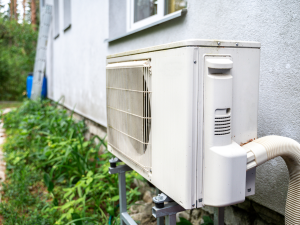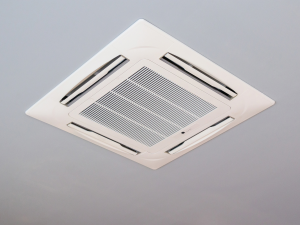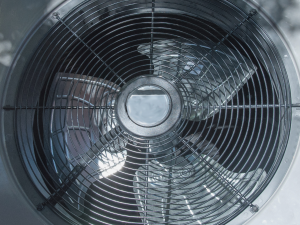You finally get home after a long day. And all you want to do is sit on your couch and watch your favorite show, of course with snacks in hand. You sit back and switch the AC. But you are still feeling hot, even minutes or hours later. Like every other machine, air conditioners experience different problems, with the most common being cooling issues. When not working optimally, ACs may either cool less or not cool after all. Most times, the culprit is low refrigerant levels. Other issues such as dirty filters or thermostat issues can also cause this. As such, you need to check the refrigerant levels if you are having AC problems.
What is a refrigerant and how does it work?
A refrigerant is a substance that aids in the transfer of heat from one area and in turn provides cooler air. Refrigerants are in the form of gas or fluid and are found in everything that cools such as vehicle air conditioners, fridges, air conditioners, and even freezers. Without the refrigerant, your AC cannot keep the home cool.
Refrigerators in air conditioners are stored inside copper coils. When hot air travels from outside, refrigerators absorb the air. The heat is then transitioned to a low-pressure liquid from the low-pressure gas. Hot air is then passed over the coils to the outside space. After cooling, the refrigerant turns to a gas (low-pressure). The fan inside the home then blows the air over the cool coils which is then distributed in the space. When constantly repeated, the cycle keeps your home cool.
What are the signs of low refrigerant levels?
When the refrigerant is running low, you may experience insufficient or zero cooling. Here are some tell-tale signs that the refrigerant levels are running low.
- A noisy air conditioner– If you hear unusual noise such as bubbling noise or a hissing sound, then the refrigerant might be leaking. Hissing sounds are indicators of the refrigerant escaping in the form of gas. On the contrary, bubbling sounds are an indication that the refrigerant is escaping in the form of liquid. This is the most common sign of a refrigerant leak since not many other AC issues cause these noises.
- A significant increase in energy bills– A significant increase in energy bills without other changes in a home that can spike the bills may imply a refrigerant leak. If your AC has insufficient refrigerant levels, it cannot get rid of as much heat in each cooling cycle, making it run longer. However, be wary of other issues that can cause increased energy bills such as an old AC system or dirty filters.
- Frost or ice on your AC– When the refrigerant level is low, the refrigerant temperature can drop below normal levels causing ice to build up on the evaporator coil or refrigerant lines. Dirty filters and closed vents can also cause the build-up of frost or ice on the AC.
- Warm air from the supply vents– The Ac cannot absorb sufficient heat per cycle when refrigerant levels are low. This causes warmer air to blow from the supply vents. The presence of warm air from the supply vents can also be caused by clogged filters, compressor issues, or wrong thermostat settings.
If your AC is not heating optimally, you should check the AC refrigerant levels before you call in a technician.
Here are some simple techniques that you can use to test the AC refrigerant levels.
- The test soap technique- This is the oldest and the cheapest way to find a leak in your AC system. If you think that the coolant is leaking through a specific place, put a water and soap solution around the area. To confirm the leak, you will see bubbles. However, this method may not be efficient if the leak is small.
- Use an electronic leak detector- Also referred to as a sniffer, this is a device that has a virtual leak indicator. It can also emit noise if a leak is detected. While there are different electronic leak detectors on the market, they may not be accurate especially if it’s windy.
Checking the coolant levels
The temperature difference for subcooling must be about 5 Kelvin while that of superheating must be about 10 Kelvin. If the levels of the coolant are low, there will be too little overheating and too little undercooling. To calculate superheating and subcooling, you will need a digital thermometer, pen & paper as well as a refrigerant slider.
1. Start by determining the type of refrigerant
These details can be found on the type plate on your installation. It includes details such as the number of circuits, potential for global warming, the number of plates, and the type of gas.
2. Check the pressure
Almost every AC system has pressure gauges that indicate discharge and suction pressure as well as high or low pressure. If your system does not have an in-fitted gauge, check the discharge and suction pressure in the documentation.
3. Determine the evaporation/ condensation temperature
Refrigerants have varying evaporation and condensation temperatures at different pressures. This is determined by a refrigerant slider. To determine the evaporation temperature, set the slide on ‘dew’. To determine the condensation temperature, set the slide on ‘bubble’.
4. Use a digital thermometer to measure the temperature on the installation
Measure the superheating temperature on the suction pipe. For the subcooling, you can measure the temperature before the expansion valve.
5. Calculate the superheating and subcooling
Now that you have all the necessary data, you can calculate the superheating and subcooling.
To get the superheating, subtract the evaporation temperature from the suction pipe temperature. To get the subcooling, subtract the discharge pipe temperature from the condensation temperature.
Results– If the temperatures are within the 10k and 5k range, then the system is operating under the right refrigerant level. If not, call in a technician to have it checked.
What should you do when AC refrigerant levels are low?
Once you check and confirm that the AC refrigerant levels are low, you should call a qualified AC technician to empty and fill the refrigerant. The cycle of refilling refrigerants can be expensive, not to forget the possible damage to the AC system. Please note that the emptying and filling of a refrigerant should only be carried out by a certified technician. Having routine checks on your AC system can prevent common AC problems.




